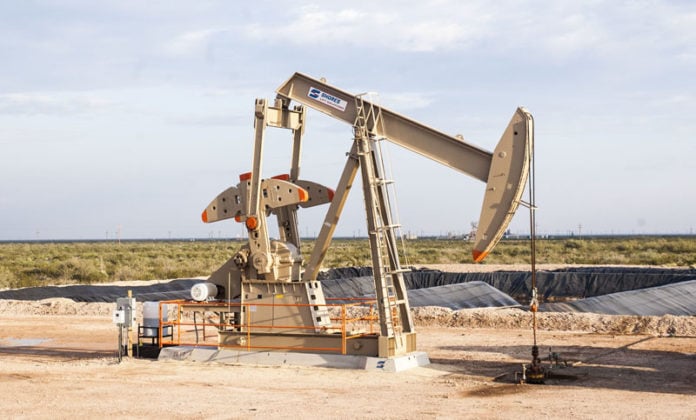Not every oil well can produce by itself.
Low-pressure wells usually require some type of external energy source to help hydrocarbons flow to the surface at a faster rate.
After the well is drilled it might produce by itself but as reservoir pressure falls at some point it might need an artificial lift to continue producing hydrocarbons at economical rates.
The most common types of artificial lifts are sucker rod pumps, electrical pumps, and gas lifts.
The artificial lift method used on any given well depends on location, reservoir properties, and economics.
Read next: What Is Enhanced Oil Recovery?
5 Most Common Artificial Lift Methods
1. Sucker Rod Pumps
This is one of the most common types of artificial lift used onshore.
The is also one of the simplest artificial methods used.
All those jack pumps that you see on older oilfields use rod pumps.
The downhole plunger is used to displace oil to the surface. The surface engine provides energy to the rod attached to the plunger.
Either fuel-powered or electrical engines can be used.
There is a limit to how fast the plunger can move which might not be ideal for higher oil rate wells.
In addition due to the large footprint, the rod pumps are usually not used on offshore wells.
2. Gas Lift
This method involves pumping compressed gas to decrease hydrostatic pressure in the well and allow hydrocarbons to flow more easily to the surface.
The gas lift works great for wells that produce a lot of solids.
However, this method requires gas either coming from the well or from somewhere else and some type of compressor and separator to operate.
The gas lift can either be continuous where gas is constantly pumped or intermittent where the gas is pumped for a certain period of time and then stopped and then pumped again.
What method is used will depend on the type of well fluids and reservoir pressure.
This method might be susceptible to hydrate formation.
Read next: How is Crude Oil Transported?
3. Electric Submersible Pump (ESP)
A downhole centrifugal pump powered by electricity from the surface is used to pump oil. ESP is usually used on higher rate wells.
Wells with ESP require access to electricity to run the pump.
The surface footprint is much smaller for ESP in comparison to the sucker rod pump setup.
However, the performance of the ESP pump might be negatively affected by solids like sand.
Because the cable is attached to the pump, sensors can be added to the downhole assembly to send data back to the surface for monitoring purposes.
4. Hydraulic Pump
This method works by pumping pressurized fluid (usually oil) from a surface to supply energy to the pump downhole.
Similar to ESP, a hydraulic pump can be used on high-volume wells.
Power fluid is usually pumped down the tubing and the oil is produced up the annulus.
5. Progressive Cavity Pump (PCP)
A downhole stator and rotor create a cavity that draws oil to the surface.
The engine is located at the surface and the mechanical force is transferred by a rotating rod.
If rubber elastomer is used, it might be affected by some downhole fluids as well as high temperatures.
Because of the rotating rod, PCPs are usually used on shallow wells.
Progressive Cavity Pumps are sometimes used for heavy oil applications such as CHOPS and SAGD.
Read next: How Is Oil Extracted From Oil Sands?
